Easy Day Trips from Milan by Train
With three airports and 23 train stations, Milan provides quick access to a diverse range of sights. Alpine lakes and hilltop citadels, Roman ruins and medieval monasteries – all are less than an hour away. After multiple trips to the area in the last several years, we’ve compiled a list of our favorite places to explore near Milan. Many of them work as bases for longer stays as well as day trips, and most offer a refreshing contrast to the increasingly over-touristed spots in Italy.
Turin
Stresa and Lake Maggiore
Central Lake Como: Varenna and Bellano
Southern Lake Como: Lecco
Bergamo
Verona
Pavia
Practicalities and Further Reading
Turin
Alpine peaks form the backdrop to Italy’s fourth-largest city. Serene and prosperous, it offers visionary architecture in an easy-to-navigate setting. Although fragments of its prehistoric and ancient Roman past linger on, most buildings date from the late Baroque through early Modern periods. As the capital of Piedmont and Sardinia under the Savoy dynasty, the city was redesigned in the early 18th century. It went on to flourish as the center of the Risorgimento, or unification of Italy, in the 1860s, and has attracted both industry and intellectuals ever since.
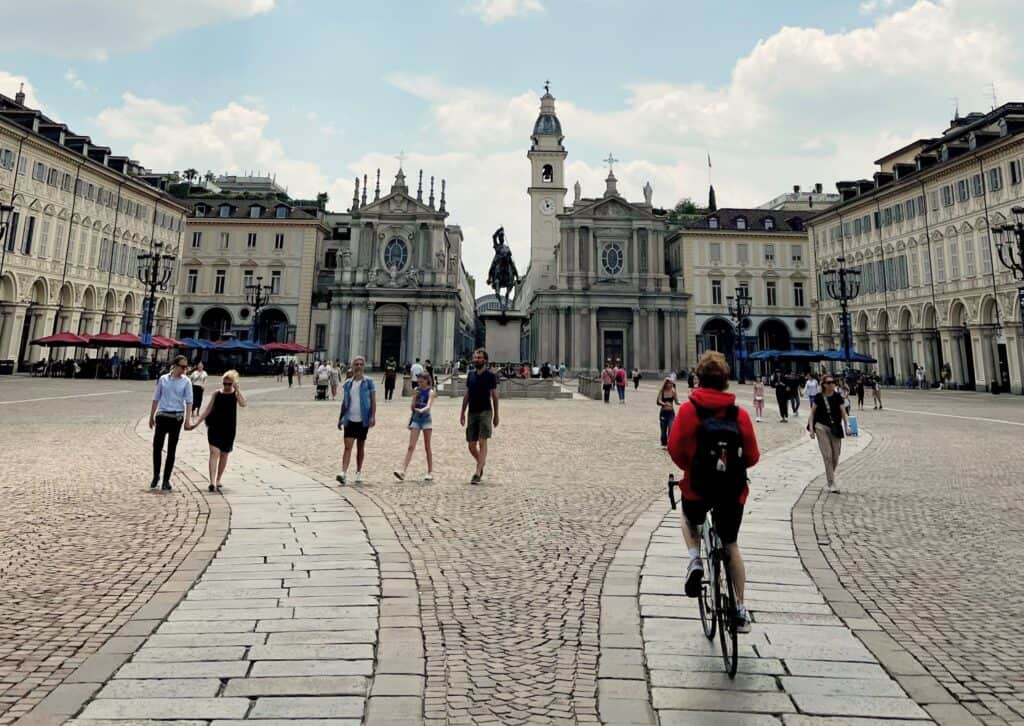
Many of Turin’s historic sights cluster conveniently in a line stretching out from the Art Nouveau train station. The arcaded Via Roma passes from a small park to the Piazza San Carlo, where a pair of coordinating church facades preside over elegant cafes serving bicerin, a decadent blend of chocolate and coffee. Around the corner lies the Egyptian Museum, with the largest collection in the world outside Cairo.
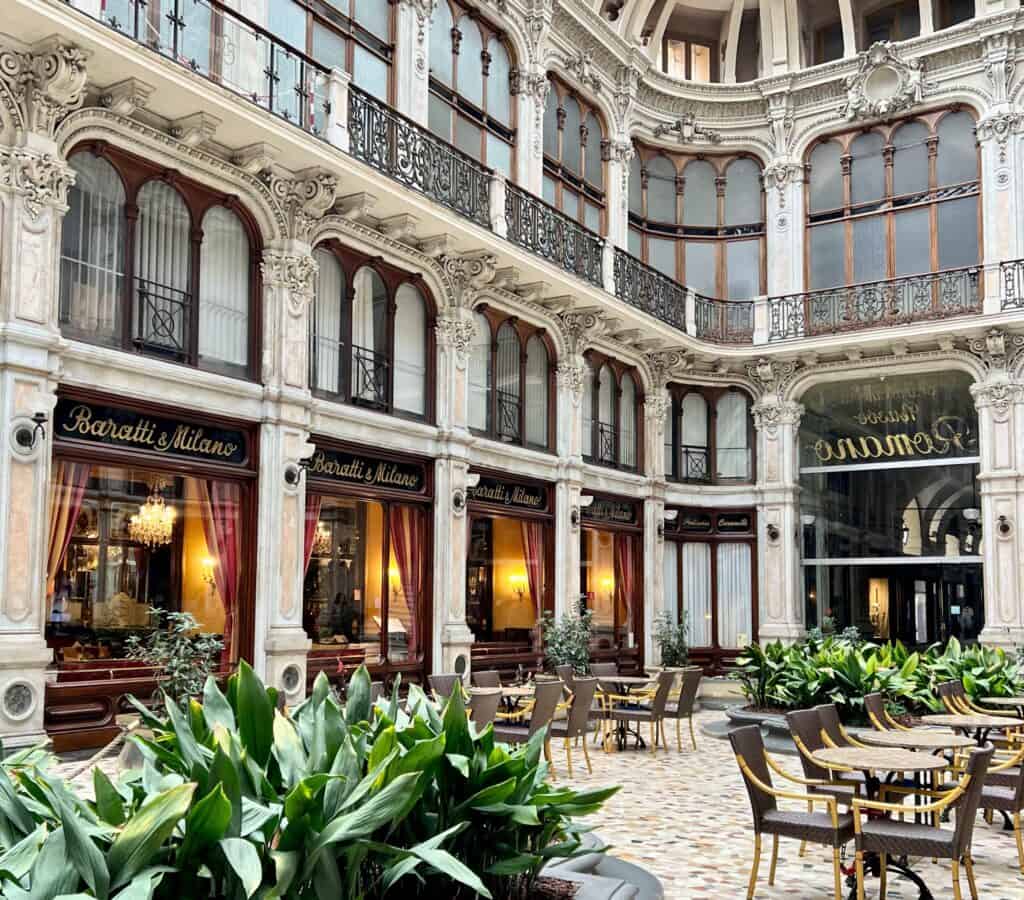
The Via Roma terminates at the Piazza Castello, where the Palazzo Madama – a medieval castle with a Baroque section tacked on to one side – sits right in the middle. Across the street, Carlo Mollino’s brilliant 1973 opera house incorporates local motifs like brick stars and an undulating facade to complement its surroundings. The enormous Palazzo Reale complex goes beyond the typical displays of royal living suites with galleries of archaeology and art, not to mention a hall of very fashionable armour (human and equine).
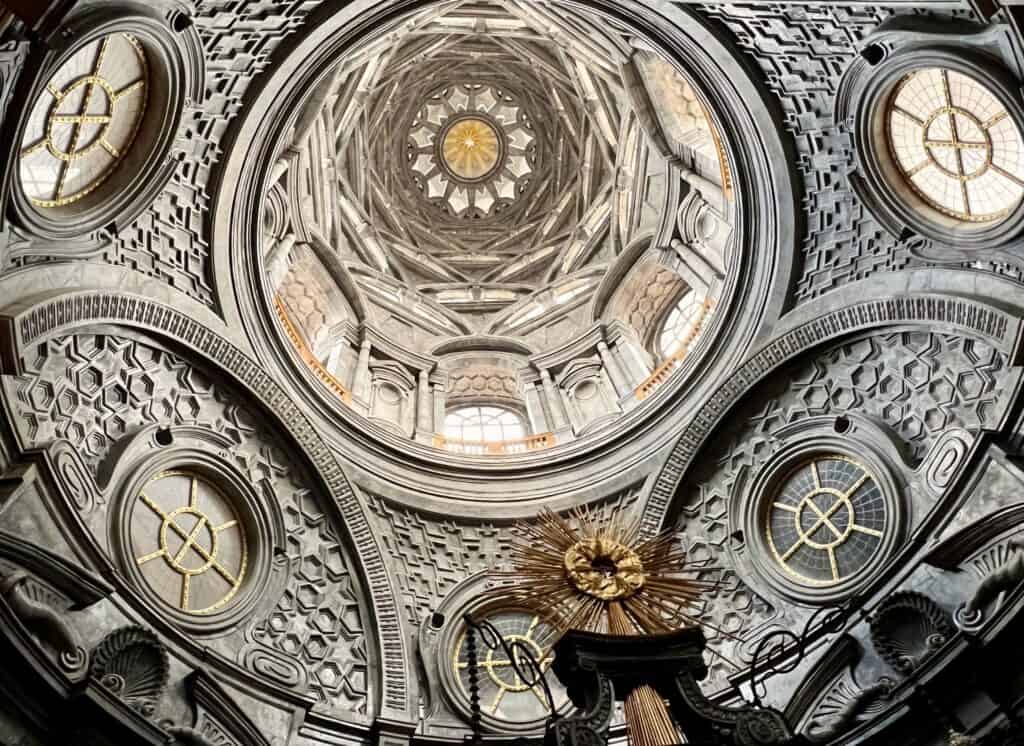
Pride of place goes to the Chapel of the Holy Shroud, Baroque architect-mathematician Guarino Guarini’s tour-de-force of light and space. Hovering over an uncanny whirl of contrasting forms and shadows, his layered dome structure extends towards infinity.


The chapel is one of Guarini’s three most important surviving works, all located within a few blocks of one another. His design for the San Lorenzo church also features a towering sequence of shifting shapes and domes within domes – but in a strikingly different configuration. Nearby, Guarini used northern brick rather than Roman stone to render the heaving curves of the Palazzo Carignano. For more, see our post on Guarani’s architecture in Turin.


Left: Mole Antonelliana. Right: detail, facade of Casa della Vittoria in Cit Turin
The spire of Alessandro Antonelli’s iconic Mole tower still dominates Turin’s skyline, and the glass-walled elevator ride through the lower levels (now converted to a cinema museum) is as exhilarating as the views from the observation deck.

Fans of Art Nouveau architecture – which Italians call ‘Liberty’ – can take a short metro ride to the Principi d’Acaja stop and the Cit Turin district. Noteworthy buildings include Pietro Fenoglio’s Casa Fenoglio-Lafleur (pictured above).
Frequent trains between Milan and Turin take as little as 45 minutes, and it’s a short walk from the Porta Nuova station to the main sites.
Stresa and Lake Maggiore
Como might get more attention, but it’s not the only alpine lake with old-world glamour and epic gardens. Blessed with the same mild climate and similarly spectacular scenery, Lake Maggiore is a quieter alternative.
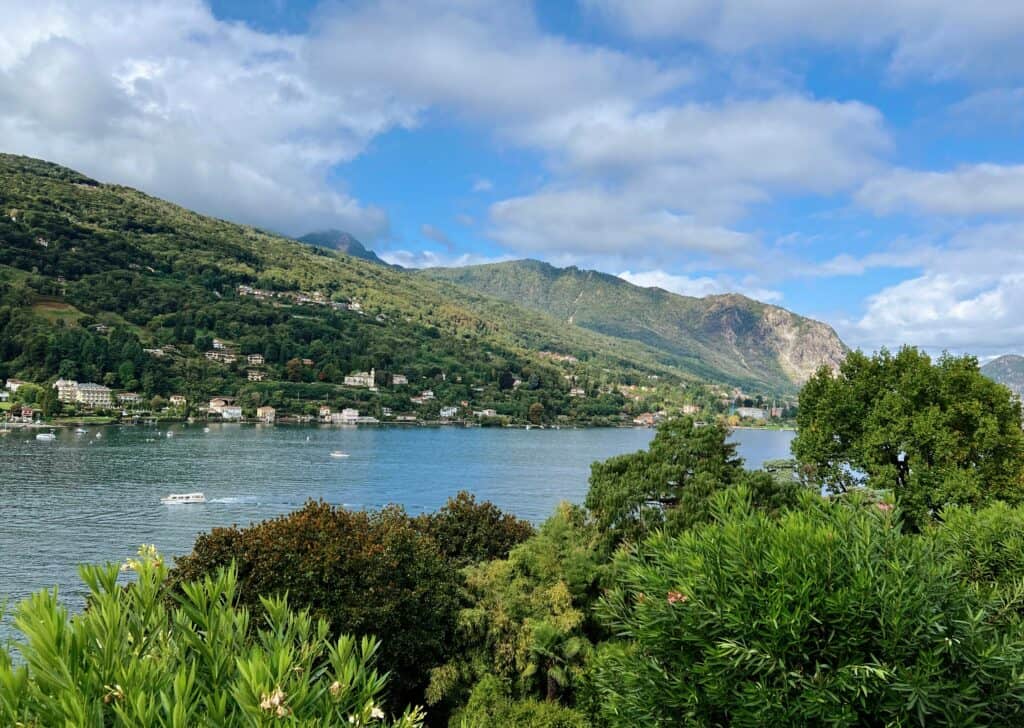
Trains deposit visitors in the town of Stresa, right on the Golfo Borromeo in the heart of the lake. This was once a stop on the Orient Express, and the first taste of the Mediterranean for visitors crossing the Alps. Grand hotels sprouted up between the vast lakeshore estates; the area has hosted everyone from Napoleon to Hemingway.


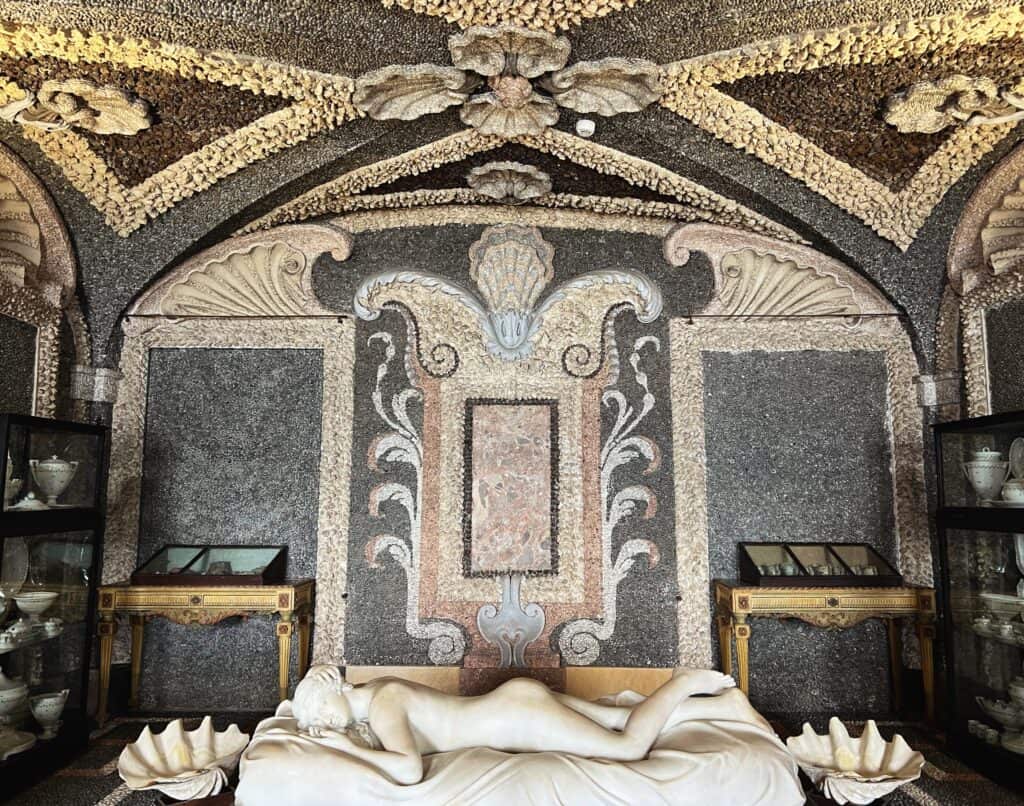
Maggiore’s most famous destinations are a trio of islets set like giant stepping-stones across the gulf. Start with the over-the-top Baroque palace and gardens on the Borromean island of Isola Bella, where the relationship between humankind and nature gets very strange indeed. On the palace’s lower level, a series of “grottoes” features mosaics of shells and stones on every surface, with oversized bees crowning pearlescent pediments. Outside, the property culminates in a pyramid of landscaped terraces, capped by a cornucopia of mythological creatures and ubiquitous cherubs.
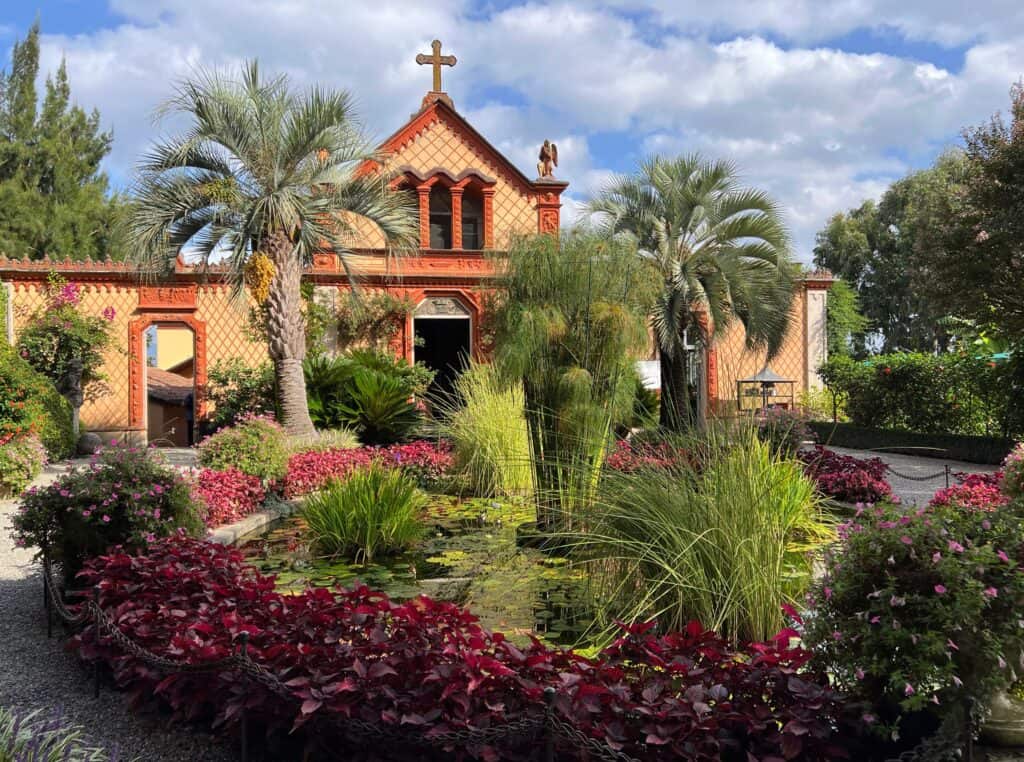
Although the Borromeo dynasty developed Isola Madre first, its expansive gardens are best explored at leisure after Isola Bella. Peacocks and other exotic birds wander freely among English-style plantings surrounding the 16th-century villa.

A few families still live on the Island of the Fishermen (Isola dei Pescatori, formally named Isola Superiore), with its tiny alleys running between colorful stucco residences. Across the gulf, the botanic gardens at the Villa Taranto feature everything from lotus ponds to lanes of skyscraping evergreens – along with lounging areas for viewing Swiss peaks.
Hourly trains take 60-90 minutes from Milan Centrale. The small station is an easy 10-minute walk from the town center and ferry terminal.
Central Lake Como: Varenna and Bellano

Lake Como is the most popular day trip from Milan for good reason. However, the lake’s central section requires a longer and more crowded journey than the other destinations included in this post. For day trips to the mid-lake, we recommend taking the train directly to Varenna or Bellano rather than passing through the town of Como. For more information, see our guide to Lake Como’s ferries.
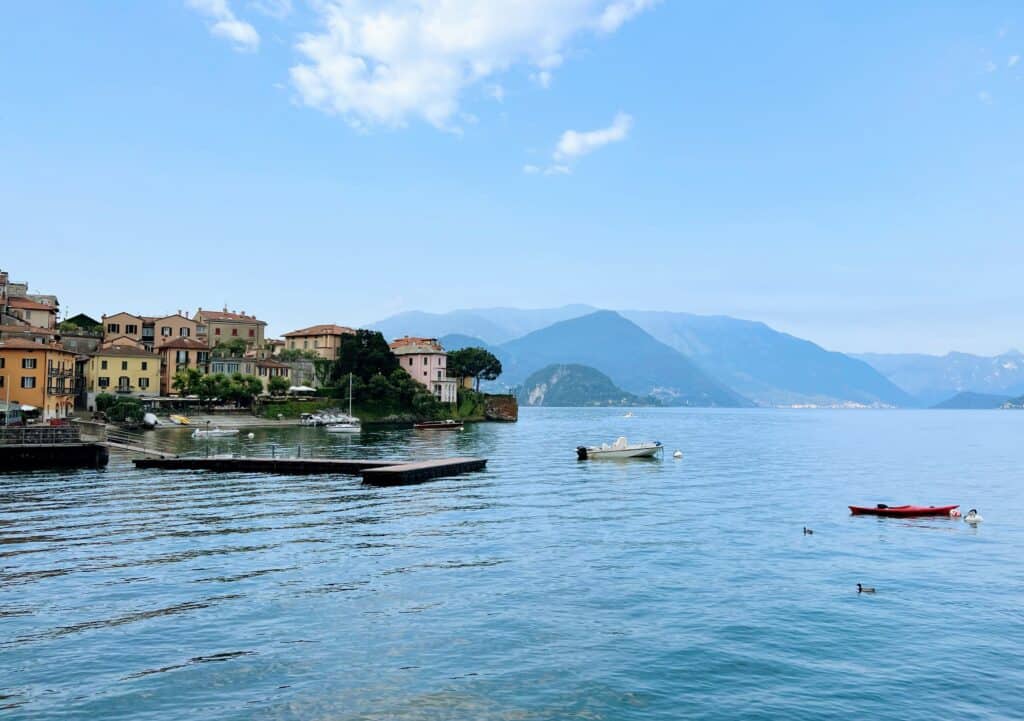
Varenna’s picturesque sweep of harbor lies about five minutes’ walk from the ferry terminal via a waterfront promenade or an upper-level road. In a layout dating to ancient Roman times, tiered medieval lanes circle the fishing harbor, connected by stairs between colorful buildings. Sycamore trees planted in a V-shape accent the town square, watched over by the 14th-century San Giorgio bell tower and church.


At the lower end of town, the Villa Monastero is a near-perfect union of architecture, cultivated plants and natural landscape. Poised in tiers along a two-kilometer strip of shoreline, the property makes dramatic use of the lake as a backdrop for its gardens. For more information, see our post on Lake Como’s gardens.
During high season visitors can avoid Varenna’s crowds by traveling an extra four minutes on the train to Bellano. Although the ferry pier doesn’t have quite as many departures, minimal tourists make the extra stop feel like a different world.
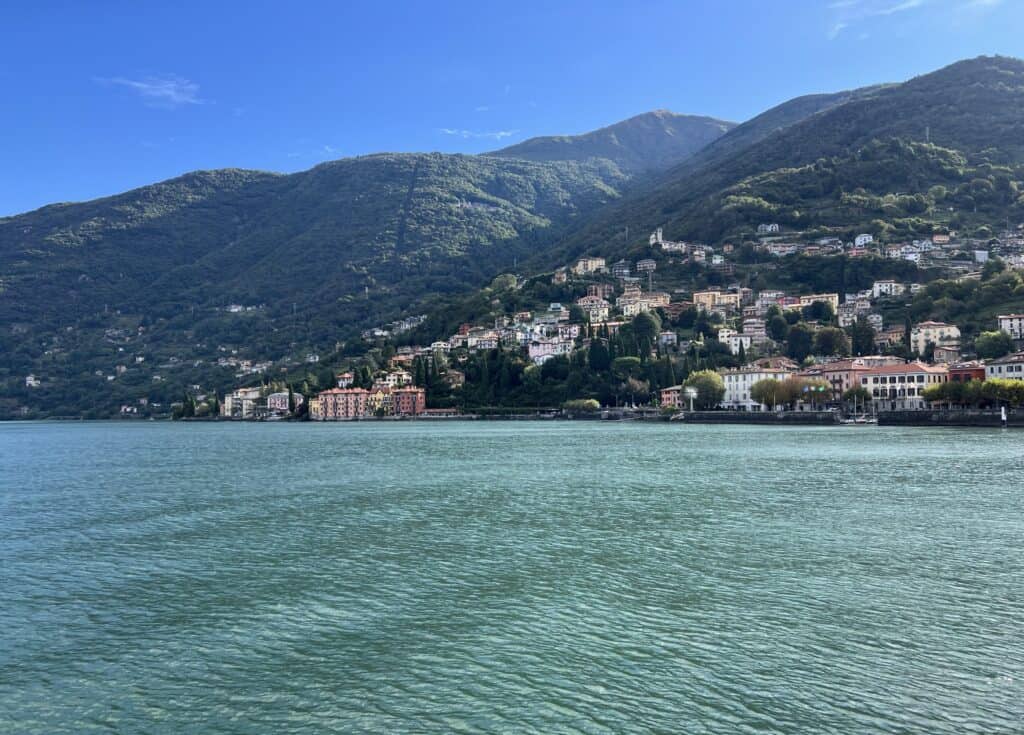
Bellano’s waterfront promenade runs down to a pebble beach and an informal park with a grand view of the lake. In the historic center behind it, the Piazza San Giorgio leads to the town’s main church, where a lovely frescoed dome hides behind an unprepossessing exterior. Steps away, the Italian Gothic facade of the Santi Nazaro e Celso features an arresting combination of black-and-white marble stripes with an elaborate frame for the rose window.


A short path leads up to the Orrido di Bellano, a hidden gorge full of waterfalls. Grated walkways and steps pass through eerie fissures full of spray and oozing water, with narrow streams thundering far below. The site also includes a small museum dedicated to local history, housed in the restored Ca’ del Diavol. The pentagonal tower’s nickname likely comes from its frescoes depicting the devil and other nasty figures. Bellano’s cemetery, just above the Orrido, offers tranquil views of the town and lake.
Multiple trains run from Milan to Varenna-Esino and Bellano. Travel time ranges from 60-90 minutes. UPDATE: Please note there is maintenance scheduled on the line between Lecco and Colico, which includes Varenna and Bellano. From June 15-September 14, October 17-19, and November 14-16, replacement buses will be provided in Lecco. During this period, day trips to the mid-lake area will probably not qualify as “easy”. For more information, see the Trenord website.
Southern Lake Como: Lecco
With a population of about 50,000 and very few tourists, Lecco offers a different experience than central Lake Como. All the way down at the bottom of the lake’s eastern leg, it looks distant on a map, but the journey is only 40 minutes from Milan.
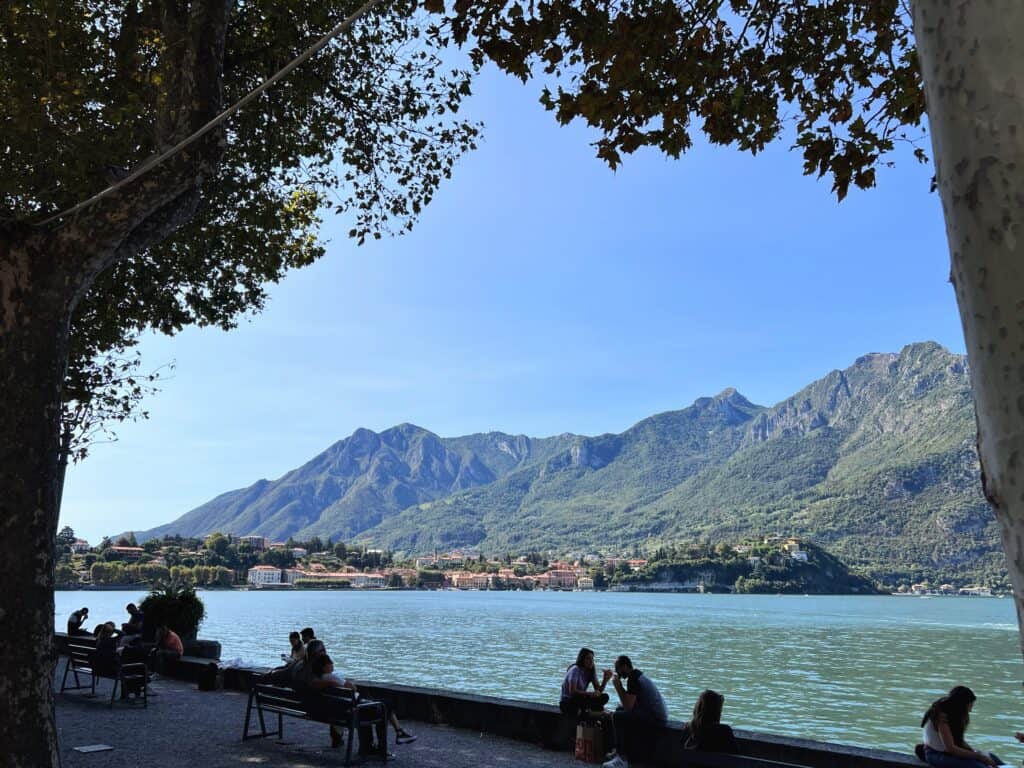
In Lecco the mountains loom close, tucking around a narrow, intimate expanse of water. Promenades stretch all around in a U-shape, split by the Adda River at the southern end and several beaches on the western side. When we visited on a sunny Sunday afternoon, the benches held locals chatting over take-out pizza boxes while children and dogs ran circles around them. Porticos and umbrellas in the elegant elongated Piazza XX Settembre offered shade and cafe seating.
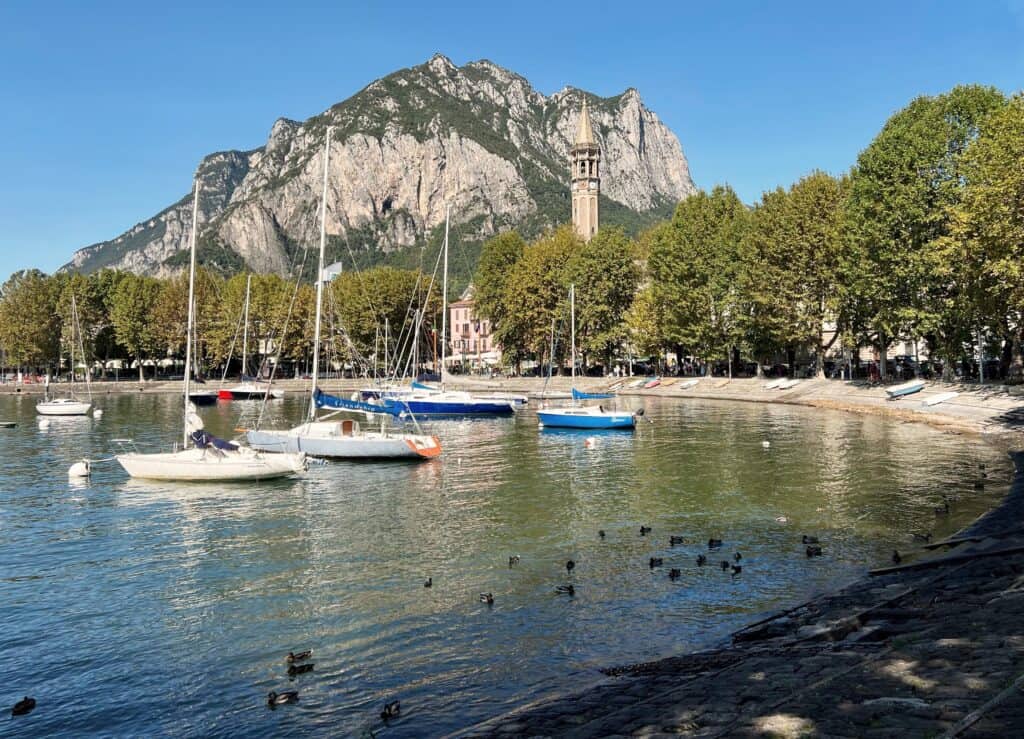
A whole itinerary awaits fans of Alessandro Manzoni’s classic novel The Betrothed, much of which was set in Lecco where the writer lived. The Church of San Nicolò’s exceptionally tall bell tower looms over town; those prepared to climb 400 steps can reserve a one-hour tour on the website. Meanwhile a golden statue of the Saint sits in the lake’s waters off Punta Maddalena.
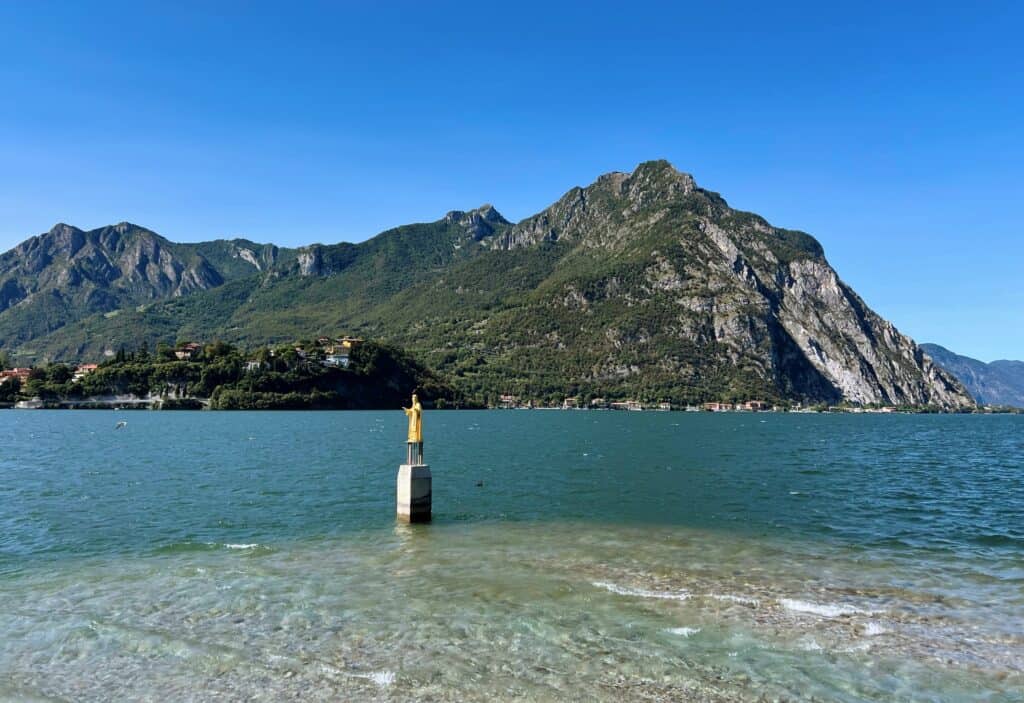
Lecco’s train station lies about five minutes’ walk inland. Multiple trains every hour run from Milano Centrale, Garibaldi, and other stations.
Bergamo
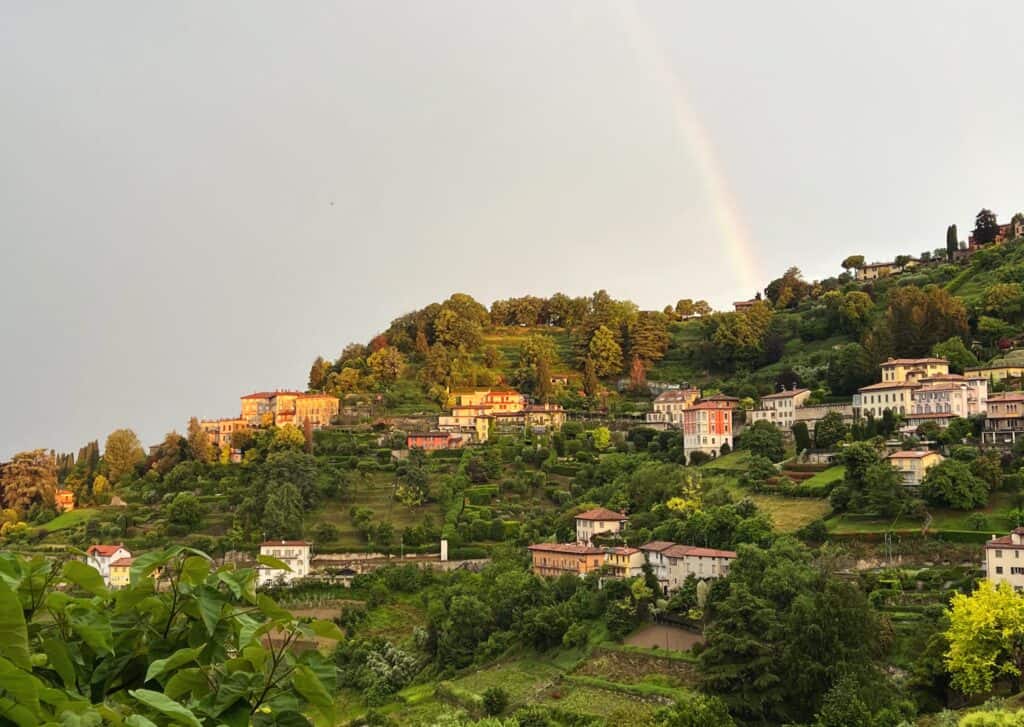
Poised between the lakes at the foot of the Alps, Bergamo provides easy access to everything from skiing to La Scala – provided you can tear yourself away from the town itself. Judicious amounts of art, architecture, and culinary pleasures mingle in a scenic layout, all set against a backdrop of mountain peaks.


Perched on a steep hilltop and surrounded by a series of Renaissance-era defensive walls, the Città Alta (Upper Town) holds most of the historic core. Switchback strips of green line the ascent, merging with the UNESCO-listed ramparts to create panoramic promenades.
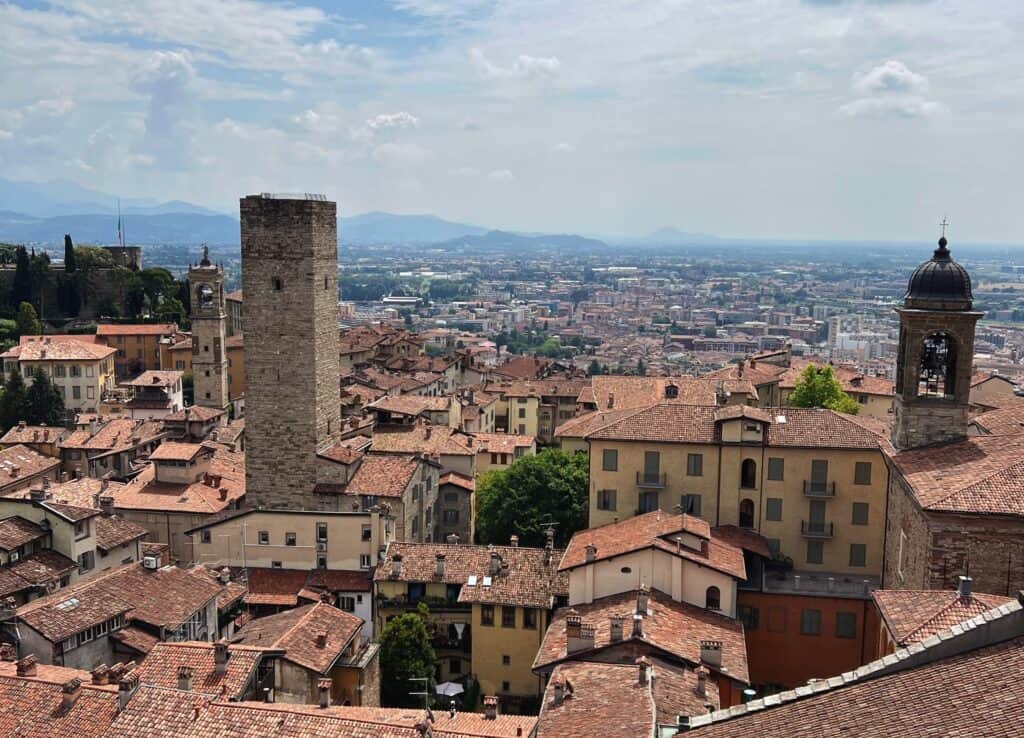
Bergamo was settled long before the Roman Empire, and became an independent commune in the 11th century. Venetians took over in the early 1500s and ruled until Italy’s unification in the 1860s. Bergamo Alta retains a medieval layout, with tiny cobblestone lanes winding between a millennium’s worth of stone structures. The most important ones cluster around the Piazza Vecchia or Old Square, celebrated even by ardent Modernists like Le Corbusier.
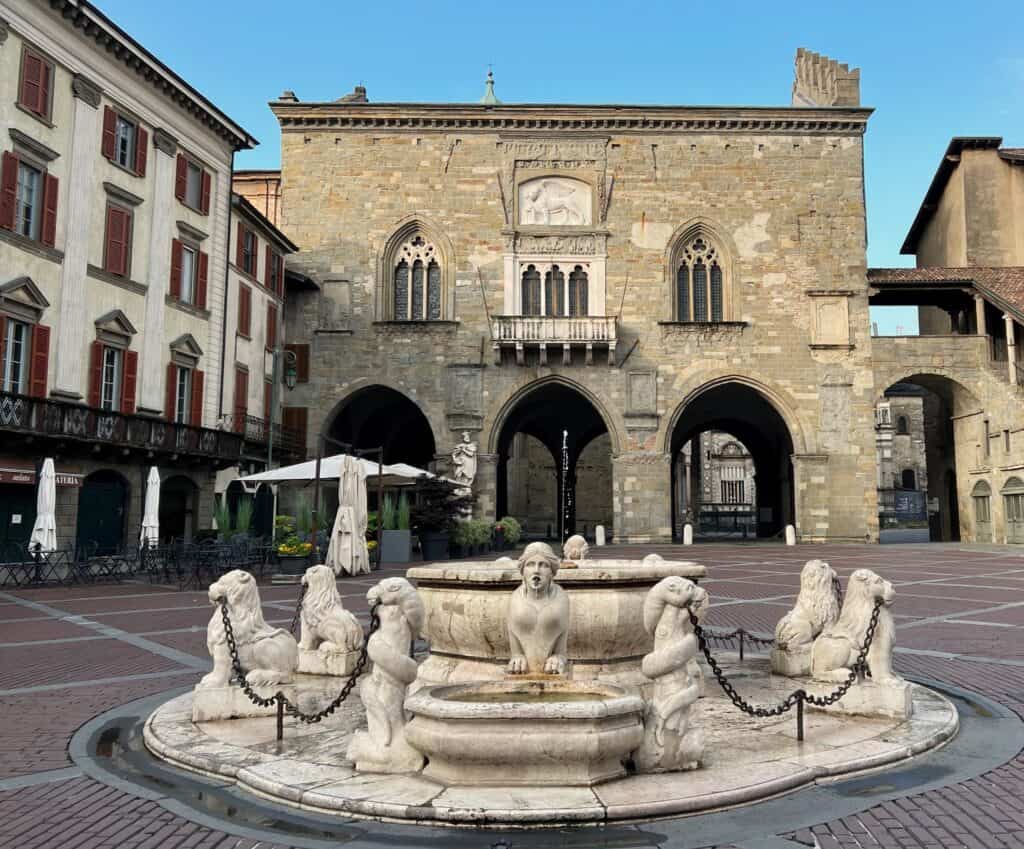
Criss-cross paving lines surround a quirky fountain near a dramatic covered staircase. Across the expanse, Venetian architect Vicenzo Scamozzi’s classical library faces off against the 12th-century Palazzo della Ragione, reputedly Italy’s oldest existing town hall.
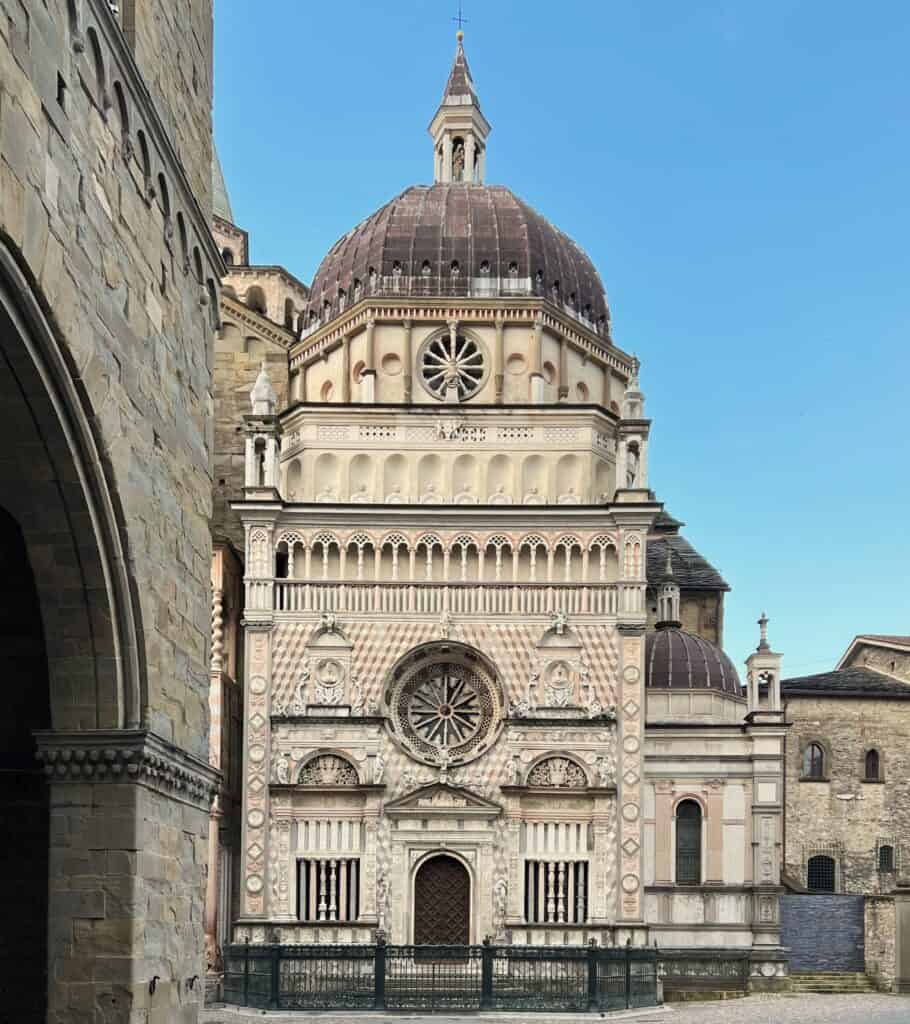
Behind the Piazza Vecchia’s ground-floor loggia, the polychrome Colleoni Chapel upstages both the rough stone of its adjoining church and the all-white cathedral opposite. A lavish array of architectural styles fit together like a box of fancy chocolates on the facade, which features not one but two rose windows under the dome. Inside the structure houses the tomb of its sponsor, one of the period’s most successful mercenaries.


Bergamo’s many museums include the Accademia Carrara, a sizable collection of art at the foot of the Città Alta. On the medieval center’s upper end, the San Vigilio funicular ascends to an even higher hill with panoramic views. The station is just outside the Porta San Alessandro, near a lush gorge where donkeys watch passersby enjoying gelato from La Marianna (a.k.a. the birthplace of stracciatella).
Frequent departures from Milano Centrale, Lambrate or Greco Pirelli stations average about 50 minutes. The #1 bus runs between Bergamo’s train station and the Città Alta.
Verona

With an enviable location in the bend of a river at the foot of the Alps, Verona was celebrated long before Shakespeare. Star-crossed lovers aside, the city’s architecture is its true attraction. Romans kicked off a tradition of engineering and design, and a surprising number of ancient monuments mingle with structures from the Middle Ages and Renaissance.


Romans arrived in the third century BCE, creating the gridded layout we see today. According to UNESCO, Verona features “one of the richest collections of Roman remains in northern Italy.” These include two major gates and a triumphal arch from the first century CE. The partially-reconstructed Pons Pietra – literally, “stone bridge” – leads to a theater carved into the side of the San Pietro hill across the river.

With a capacity of up to 30,000 spectators and 74 exits (vomitorium), Verona’s Roman arena is one of the larger examples of its kind. Today its superior acoustics make an ideal venue for circuses, concerts and a renowned opera festival. The adjacent Piazza Bra features a curving stretch of cafés along one side which serves a steady stream of residents and visitors.


Verona grew in size and independence during the Middle Ages. Each of the four main churches in the historic center is its own kind of wonder. Besides the wealth of carvings produced by medieval artisans, they also received contributions from major Renaissance artists such as Pisanello, Mantegna, and Titian. In 1193, construction began on the Palazzo della Ragione (Palace of Reason), a complex straddling several piazzas and courtyards. Visitors can climb 84 meter (275 feet) Torre dei Lamberti for panoramic views of the city.
Carlo Scarpa’s 1958-64 celebrated restoration of the castle pioneered the use of modern elements to complement historic remains. Today the castle showcases frescoes, paintings, and sculpture from the medieval period through the 18th century.


The Piazza delle Erbe, built over the ruins of the Roman Forum, retains its traditional role as a marketplace – although nowadays the stalls hawk tourist souvenirs by day. Many of the surrounding buildings feature traces of the outdoor frescoes which once graced much of the city. Near the end of the piazza, the Colonna di San Marco commemorates the city’s union with Venice in 1405. Venetian influence eventually crept into Verona’s architecture, such as the statues topping the Palazzo Maffei.
High speed Frecciarossa and Italo trains from Milan take 70 minutes. Verona’s Porta Nuova station lies an easy 15-20 minute walk from the Piazza Bra. Alternatively, multiple bus lines just outside the station serve the historic center; the ride to the Piazza Bra takes about 10 minutes. For more information, see our post on Verona.
Pavia

The train ride from Milan to Pavia takes less than 30 minutes but seems to span centuries. Medieval towers, churches, and a castle all cluster within walking distance of the Ticino River. In the farmlands just outside of town, the Certosa di Pavia rises like a marble jewel.
The city preserves its ancient Roman layout, with the Piazza della Vittoria laid over the old Forum. Its elegant expanse stretches for four blocks, with plenty of cafés to sit and soak up the atmosphere.


Pavia came into its own after the Empire collapsed. The invading Lombards made it their new capital in 554 as they swept down the peninsula. Charlemagne defeated them in 774, but his new Holy Roman Empire kept Pavia as the capital of Italy. Several churches remain from this period, including the San Pietro in Ciel d’Oro and the San Michele Maggiore, where Lombard Kings kings received their ‘Iron Crown’.
Pavia’s fortunes surprisingly went up after its defeat by Milan in 1359. The ruling dynasty, the ruthless Viscontis, wanted to revive the Lombard dream of a united Italian peninsula and started a number of projects in the former historic capital. Along with a castle, the family established Pavia’s university, which remains one of Italy’s most prestigious schools and houses an eclectic series of specialty museums.

Several architects worked on Pavia’s cathedral, most notably Donato Bramante and (probably) his friend Leonardo da Vinci. The cathedral includes a massive dome – at the time, only Florence’s Santa Maria del Fiore surpassed it in size. The plan and dome of Pavia’s Duomo paved the way for Bramante’s design of St. Peter’s Cathedral in Rome.


A short train ride from town, the Certosa di Pavia is one of the most exquisite building complexes of the Renaissance. The opulent monastery for reclusive Carthusian monks was founded by Duke Gian Galeazzo Visconti, the wealthiest and least scrupulous man of his day. Although the exterior qualifies as Renaissance, it’s a far cry from the style’s spare origins in Florence. On the extravagant facade, simple circles and squares mingle with stylized reliefs and fully-representational three-dimensional carvings.
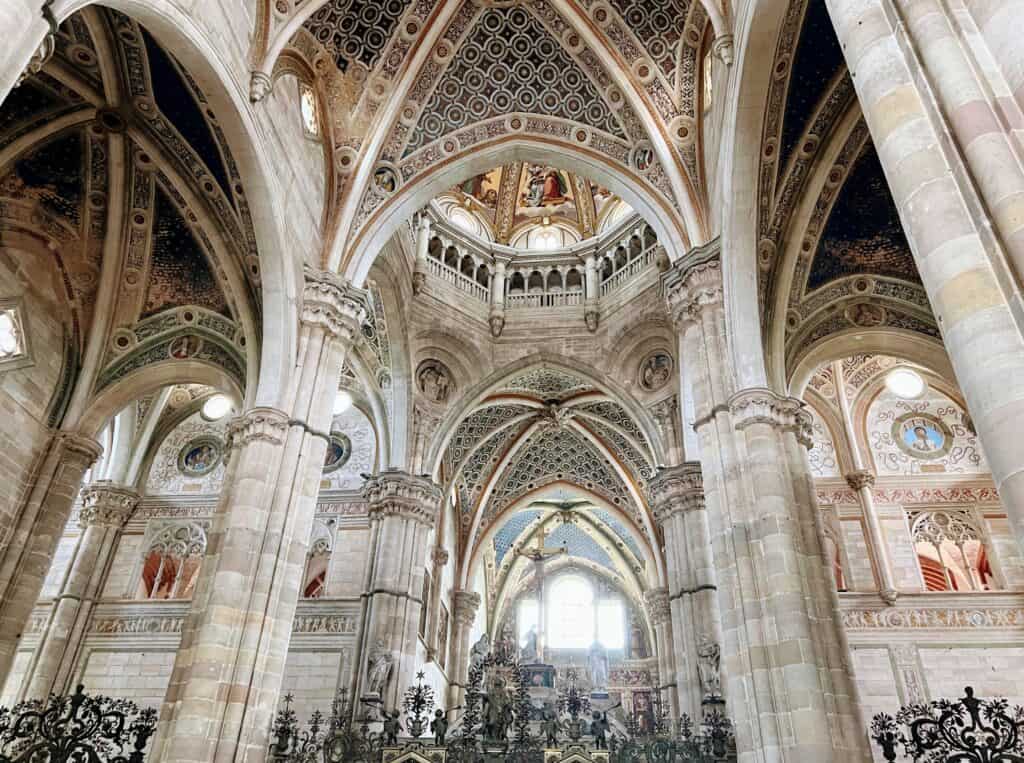
Moving inside the church and into the rest of the monastery takes one back in time to earlier architectural styles. The main church began with Milan’s Gothic Duomo as a model – but while that building can seem dark and heavy, the Certosa’s interior glows with color and pattern. Its walls hold the largest fresco cycle in 15th-century Italy, with work by Perugino and Bernardino Luini.
Pavia’s proximity to Milan makes an easy day trip. The Certosa di Pavia lies 8 km (5 miles) north of town, with its own train stop. To save time and avoid the site’s mid-day closure, we recommend visiting the monastery on the way into or out of Pavia. For more information, see our post A Day Trip from Milan to Pavia and its Certosa.
Practicalities and Further Reading
Most of the journeys listed above are operated by Trenord, the regional train service for Lombardy. Seats are generally available on the spot and don’t need to be purchased in advance.
High-speed trains operated by Italo and Trenitalia offer significant savings when booked early. The TrenItalia app is a game-changer for train travel in Italy. We use it all the time to view schedules and purchase tickets: no more contending with closed ticket counters, slow machines, or long lines. Multiple payment options include secure forms such as ApplePay.
For more on the area, see our posts:
A Guide To Lake Como’s Most Beautiful Towns
A Guide to Ferries in Lake Como
A Guide to Milan’s Diverse Architecture, Organized by Neighborhood
Milan’s Innovative and Unusual Churches
There are many more posts on our Northern Italy page.

